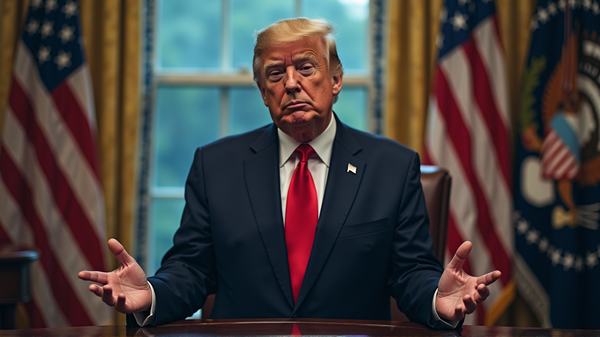Trump's Tariffs: A Game-Changer for US Economic Growth?
As the world anticipates Wednesday’s report detailing the United States’ economic growth for the first quarter, all eyes are on the possible influences of President Donald Trump’s tariffs. The import taxes, previously a topic of heated debate, now stand as a possible cause for significant changes in the nation’s economic landscape.
Understanding GDP and Tariffs
The Gross Domestic Product (GDP) is a key measure, reflecting the total economic output of a country. This Wednesday, the GDP report is expected to reveal an annual growth rate of merely 0.3%, as opposed to the previous quarter’s robust performance at 2.4%. The anticipated slowdown provokes questions and concerns among economists and policymakers alike.
The Surge of Imports and Its Implications
In a surprising turn of events, consumers rushed to purchase goods from overseas before the tariffs came into full force. This surge in imports is particularly relevant as it detracts from GDP growth, marking one of the first tangible impacts of Trump’s import taxes on hard economic data.
The Predictions from Economic Experts
Some economists foresee even more drastic outcomes than the current consensus, with predictions suggesting a potential contraction in the economy—an event not seen since 2022. The Federal Reserve Bank of Atlanta’s GDP Now tool points towards a 2.5% annual decline, underscoring a mood of unease and anticipation in financial circles.
Broadening the Economic Perspective
While Trump’s tariffs have stirred pessimism among businesses and individuals, critical indicators like unemployment and inflation have thus far remained stable. This has kept the general economic landscape resilient, though concerns persist regarding the future trajectory.
A Note on the Upcoming Report
According to Investopedia, this upcoming release holds significant weight as it promises to be the first standardized measure unveiling the repercussions of the tariff policy. The narrative emerging around this report could potentially propel future economic strategies and dialogues.
In conclusion, while President Trump’s tariffs have yet to deeply affect the broader strokes of the economy’s painterly canvas, Wednesday’s report may begin to define the contours. As markets and individuals brace for insights, the conversation around trade policies will undoubtedly sustain its resonance across political and economic spheres.




